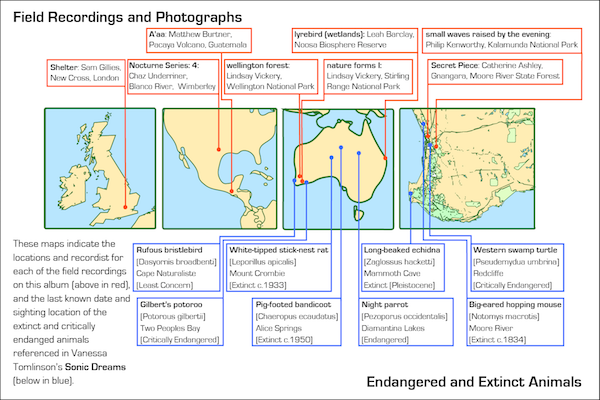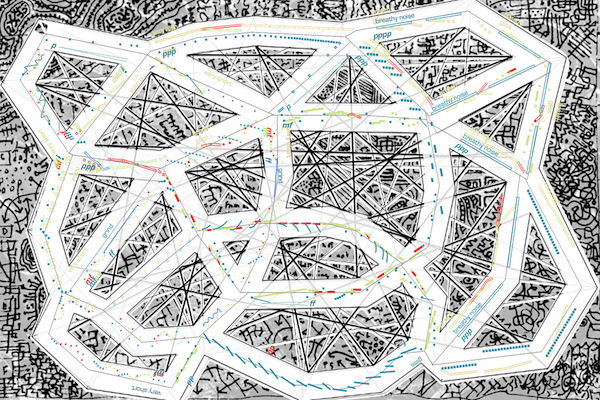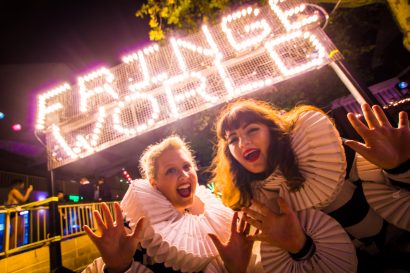Outdoor shows are relatively common in Perth, especially in summer… but have you ever attended a performance in a bird sanctuary? Perth’s GreyWing Ensemble are giving you the opportunity to do just that when they launch their album “nature forms I” this weekend. Nina Levy caught up with GreyWing’s Lindsay Vickery to find out more.
Most album launches take place in venues specifically designed for listening to music… theatres, clubs or concert halls. But the first of two album launches for GreyWing Ensemble will take place at Eric Singleton Bird Sanctuary in Bayswater, this Sunday 25 March. Given the unconventional choice of venue, it’s no surprise to learn that GreyWing Ensemble – which consists of Lindsay Vickery on clarinet/saxophone, Jameson Feakes on electric guitar, Kirsten Smith on flute and Catherine Ashley on harp – are particularly interested in environmental music.

It’s this interest that drives the first of GreyWing’s two new albums, “nature forms I”, says Vickery. “Many of the pieces from ‘nature forms’ and Sunday’s launch take a stance where they draw their structure and sounds from recordings of natural environments, sometimes called field recordings or soundscapes, rather than traditional music structures and sounds,” he explains. “They ask the musicians and the audience to try to enter into the rhythms and timbres of the natural sound world rather than transforming natural sounds to fit within the conventions of classical music language. The melodies that evoke birds sounds in a Beethoven symphony, for example, use the scales and rhythms of classical music rather than try to precisely mirror the actual sounds of bird. There’s a limit of course – you can only listen and play with ‘human ears’ but it’s a sort of nature rather than human first aesthetic position that came out of the environmental movement of the 1970s and has been increasingly been explored by composers.”

That “nature rather than human first aesthetic” will be in evidence at the Eric Singleton Bird Sanctuary launch, too. “There’s no power there, of course, so we use a lot of Bluetooth speakers, each of which is pretty quiet, spread around the space to play the ‘field recordings’. That way they are more like sounds in nature that occur in many locations, not just from two big speakers in a PA system,” Vickery says. “I suppose for most projects the fairly loud and unpredictable ambient sound of birds, frogs and insects would be a drawback, but it is perfect for this album because we can kind of embed ourselves in that sound world try to become part of the family.”
It seems as much a philosophical as a musical stance, a desire to tread lightly on this earth, as well as experimenting with sound. “It’s sort of both of those things,” agrees Vickery. “Jameson studied with the composer Michael Pisaro, who calls this approach playing ‘just below and just above “music”‘. It’s part of that same ‘nature first’ (or at least equal) aesthetic I mentioned, so trying to fit in, rather than dominate the sonic environment. Of course, it has the side effect that it’s generally quite soothing music to listen to.”
On Friday 6 April, less than two weeks after the launch of “nature forms I”, GreyWing will launch another album, “Lines of Flight”, at Gallop House in Dalkeith. It’s quite a different album, observes Vickery. “‘Lines of Flight’ is a collection of works written for the group by local composers Catherine Ashley, Eduardo Cossio, Sam Gillies, Cat Hope and me. That launch is at Gallop House in Dalkeith, where Kate Moore is this year’s composer in residence. It’s a bit less thematic, but perhaps the most common theme is composers blurring the lines between prescribed and improvised situations for the performers. The works approach this goal through a range of extended, graphical, textual and extended notations.”

Experimenting with new forms of notation is central to both albums and Vickery explains that the scores are created using an iPad app developed at the Western Australian Academy of Performing Arts (where Vickery is a senior lecturer and coordinator of the composition and music technology program). “It’s called the Decibel scoreplayer and it allows you to scroll notation and graphics across the screen and synchronise it with multiple iPads,” he elaborates. “The general project is to develop music notations that are better suited to particular requirements – for example music with a lots of sliding pitches and no pulse is very hard to represent with traditional notation, the same with music where timbre is the most important element and of course filed recording fit into both of those categories. The scoreplayer also allows you to organise the musical structure differently – it is simple to coordinate sections to be played in different orderings or combinations for example and coordinate it wirelessly between the iPads.”
Even if one doesn’t know much (or anything!) about musical notation, the results are fascinating to view, so it’s pleasing to learn that these are being shared. “Both albums have a pretty elaborate physical object, a sort of ‘art book’ that you can get in addition to the recordings – a ‘concertina book’ and case with bookends laser cut with score excepts,” says Vickery. “For ‘nature forms I’ the concertina image is a full length, nearly two and a half metre score of my piece ‘nature forms I’. For ‘Lines of Flight’ it’s the score from Sam Gillies’ ‘Snowden (Eyes in the Sky)’. We worked with the amazing local design company Future Shelter to create it. Both also include a pretty fancy liner notes and postcard showing the locations of all the field recordings for one album and the crazy looking pretzel score for my piece ‘detritus’ for the other.”
‘nature forms I’ launches March 25, 6pm, at Eric Singleton Bird Sanctuary. Listen/purchase here.
‘Lines of Flight’ launches April 6, 6pm, at Gallop House, Dalkeith. Listen/purchase here.
Entry to both events is by donation.

Like what you're reading? Support Seesaw.






